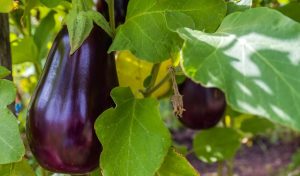If you’re looking for an unusual and eye-catching addition to your garden, consider growing goji berry plants.
These plants are native to China and Tibet, and have been used for centuries in traditional Chinese medicine.
Goji berries are high in antioxidants, vitamin C, and minerals, making them a healthy addition to your diet.
They also taste delicious – slightly sweet with a slightly tart flavor. Best of all, goji berry plants are easy to grow in pots, so you can enjoy their delicious fruits right at home.
Goji berries are best grown in a large container that is at least 18 inches wide. For a good sized plant use a deep container that will allow the plant roots deeply and promote a strong and healthy plant. Use a good quality compost and keep well watered but not soaked.

What are Goji berries?
Goji berries are the fruit of the Lycium barbarum plant, which is native to China and Tibet.
The berries have been used for centuries in traditional Chinese medicine and are also used widely for their nutritional value.
Goji berries are a source of antioxidants, vitamins, and minerals, making them a healthy addition to your diet.
They are considered to be a superfood because of their high nutrient content.
Health Benefits of Goji Berries
Research has shown that Goji berries can boost immunity, protect against heart disease and cancer, improve brain function, and more.
They are a source of antioxidants, which are substances that protect the body from damage caused by free radicals.
Goji berries are also a good source of vitamin C, which is an important nutrient for immunity, skin health, and collagen production.
They are also a source of fiber, iron, zinc, and other minerals.
Where can you get Goji berry plants from?
Goji berry plants are available from a number of online retailers and nurseries.
You can also find goji berry plants at some garden centers and plant nurseries.
If you have difficulty finding them locally, you can order goji berry plants online.
[amazon box=”B00132EEQA” template=”horizontal”]
How to grow Goji berries in pots
Goji berry plants are best grown in a large container that is at least 18 inches wide.
For a good sized plant use a deep container that will allow the plant roots deeply and promote a strong and healthy plant.
Depth of the pot is more crucial than the width as the plant will stop growing as soon as it’s roots reach the base of the pot.
So, for a good sized Goji berry plant you should use the deepest pot that you can find.
Fill the pot with a good quality compost that has been mixed with vermiculite or sand to improve drainage and mix in a few handfuls of rotted manure or other slow release fertiliser.

Your Goji berry plant will grow best in strong sunlight where it is protected from cold winds.
Keep the plant well watered, particularly when the berries begin to form and never allow the pot to dry out.
When do Goji berry plants produce their berries?
Goji berry plants usually take between 2-3 years to produce their first crop of berries.
The actual time will depend on the variety of plant and growing conditions.
Generally, Goji berry plants grown in pots produce a smaller crop of berries than those grown in the ground.
How much sun do Goji berries need?
Goji berry plants need full sun to produce the best crop of berries.
They will also tolerate partial shade but will produce fewer berries in shadier conditions.
Do Goji berries suffer from any pests or diseases?
Goji berries are relatively pest and disease free.
The main pests that might attack your plants are aphids, whiteflies, and spider mites.
These can be controlled with an insecticidal soap or neem oil solution.
The most common disease that affects Goji berry plants is powdery mildew.
This can be controlled with a fungicidal soap or neem oil solution.
How to harvest Goji berries
Goji berries are usually ready to harvest from late summer through to early autumn.
The exact time will depend on the variety of plant and growing conditions.
When the berries are ripe they will be a deep red color and will have a slightly wrinkled appearance.
To harvest the berries, simply cut the stems that bear the fruit and place them in a colander or basket.
Berries can be eaten fresh from the plant or used in recipes.

They can also be dried for storage.
To dry the berries, place them on a baking tray lined with parchment paper and put them in a preheated oven set to the lowest temperature.
Leave the berries in the oven until they are dried and shrunken but still pliable.
This can take anywhere from 12-24 hours depending on the size of the berries.
Once dried, store the berries in an airtight container in a cool, dark place.
Goji berry recipes
There are many ways to include Goji berries in your diet.
They can be eaten raw, cooked, or dried.
Here are some ideas for using Goji berries in recipes:
– Add Goji berries to smoothies or juices
– Add Goji berries to cereals or oatmeal
– Use Goji berries to make jam or jelly
– Add Goji berries to yogurt or ice cream
– Make a Goji berry syrup to add to cocktails or soda water
– Use dried Goji berries as a trail mix snack
– Add Goji berries to salads or stir-fries
– Use Goji berries to make tea or coffee
– Add Goji berries to baking recipes such as muffins, breads, or cookies.
Final Words
We hope that this guide has given you everything you need to know about growing Goji berries.
With their delicious taste and nutritional value, these berries make a great addition to any diet.
They are also relatively easy to grow, making them a good choice for both experienced gardeners and those new to gardening.






